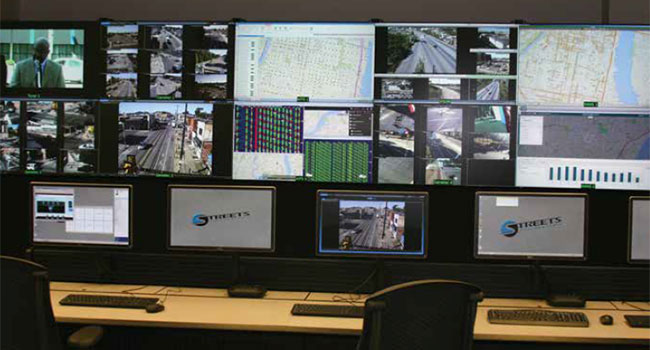
The Command Center of the Future
Variety of systems and solutions exist for operational picture
- By Dan Gundry
- Oct 01, 2018
At the center of any government organization’s security operation
stands its nucleus, arguably one of the most important
pieces for overall functionality and efficiency: a
command center or Security Operations Center (SOC).
A place where a variety of systems and solutions come together, the
command center exists to provide a common operational picture,
mitigate threats and promote enhanced communication and response
during an incident.
A number of factors make command centers in government
facilities unique, including the need for connecting and synchronizing
multiple networks, integrating with legacy systems, transitioning
from digital to analog (in many cases), and providing
real-world deployment solutions that must be usable without compromising
OpSec.
Emerging technologies are driving local, state, and federal agencies
to build SOCs that bring a variety of sensors together that address
the aforementioned components and create a cohesive approach to
security—for both employees and visitors. Looking ahead, we can expect
to see the following elements shape the command center of the
future in government organizations:
Convergence
Systems. Command centers today combine a number of security
components, such as video, audio, access control, intrusion, and
more. There is a growing trend present in bringing these various
pieces together to create a Smart City environment for government
agencies to better identify threats and protect residents. But as end
users demand an emphasis on the full umbrella of security rather than small silos, we’re starting to see facilities
include additional pieces, such as risk and
threat assessment, social media monitoring,
IoT security, and cyber terrorism within
each of these agencies.
Data incorporation. Almost all of today’s
devices on the network are driving big
data; the amount of information available
to command centers will only continue to
increase, and as analytics improve, effective
data aggregation must follow. Cities and municipalities
generate a ton of data on a daily
basis, which means processes need to be in
place to analyze and act on this information
in real-time. The command center of the future
will include dashboards that aggregate
this data so that stakeholders can make sense
of a large amount of information and put it
in a digestible format to drive streamlined
decision-making.
Network. The wall between cyber and
physical security has begun to come down, as
stakeholders realize the need for collaboration
to protect the entire enterprise. Visualization
platforms in command centers, such
as overview video walls, will take advantage
of the growing and valuable network architecture,
resulting in less hardware, more redundancy,
and more reliability.
No longer are the days when all decision
makers are in the same area as the command
center. They are spread out across buildings,
campuses, or even greater distances.
Communications must include the ability to
send a shared perspective of real-time content
about a situation from within the four
walls of the command center and beyond to
first responders and stakeholders—no matter
where they may be—to make informed
decisions and implement responses. In government
environments, this also means the
potential of sharing critical information with
other agencies. With such an abundance of
information, including mobile surveillance
applications, crowdsourcing platforms and
social media, all of which provide additional
intelligence and can be used to streamline
investigations, one user interface in a command
center can make all the difference between
a successful or failed response.
Artificial Intelligence
Today’s security threats to metropolitan areas
require a predictive and preventative
stance, and emerging technologies such as
analytics and machine learning allow security
operators to stay ahead of the game.
Artificial intelligence (AI) enables the ability
to learn behaviors, making the detection and
communication of anomalies easier and responsiveness
more comprehensive.
For example, as a video camera watches
a street corner day in and day out, machine
learning software can aid the computer in
learning patterns for passersby. As the machine
learns what “normal” behavior is, it
also learns to detect anomalies in the environment,
such as a backpack or loitering
individual. This information can be relayed
back to an operator in a command center
to alert officials and activate the appropriate
response protocols. Tools that automate situational
awareness and integrate platforms
can provide operators with more timely and
accurate information upon which they can
base their decisions.
In a command center environment, this
means that operators can easily identify
critical breaches within a facility, following
standard operating procedures to respond
accordingly in line with the agency’s overall
emergency management plan. AI and machine
learning facilitate the conglomeration
of enhanced data to streamline this response.
Government entities and agencies rely on
their SOC for communicating with operators
and first responders on a daily basis and
in times of an emergency. As risks become
more severe, a complete situational picture is
necessary. Convergence and AI, among other
emerging technology, will allow operators
in government facility command centers to
achieve this by promoting automation, awareness,
and rapid responses for operators.
This article originally appeared in the October 2018 issue of Security Today.